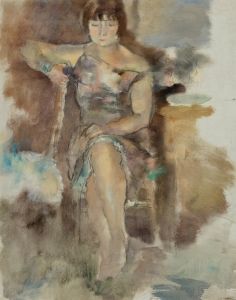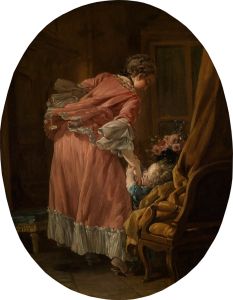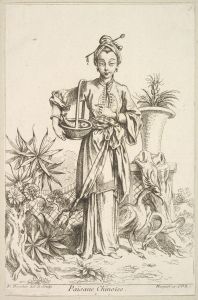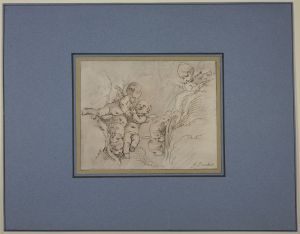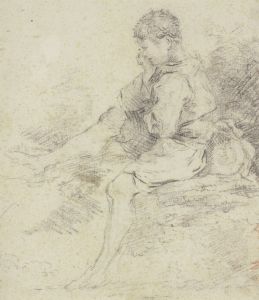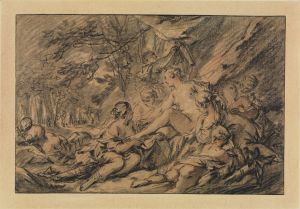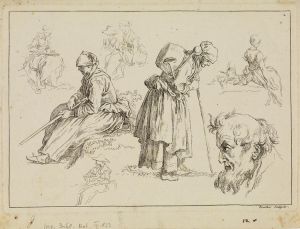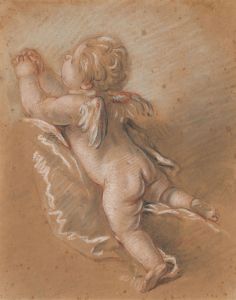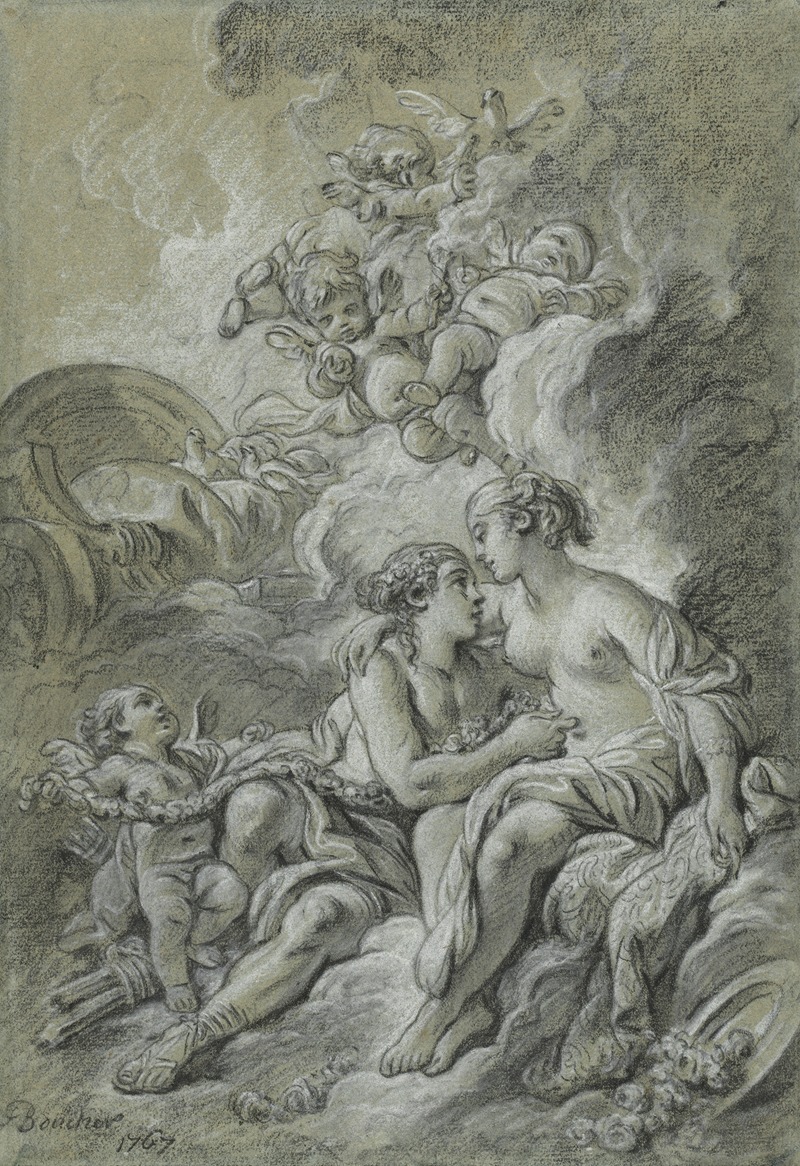
Venus appuyee sur son cher Adonis …
A hand-painted replica of François Boucher’s masterpiece Venus appuyee sur son cher Adonis …, meticulously crafted by professional artists to capture the true essence of the original. Each piece is created with museum-quality canvas and rare mineral pigments, carefully painted by experienced artists with delicate brushstrokes and rich, layered colors to perfectly recreate the texture of the original artwork. Unlike machine-printed reproductions, this hand-painted version brings the painting to life, infused with the artist’s emotions and skill in every stroke. Whether for personal collection or home decoration, it instantly elevates the artistic atmosphere of any space.
François Boucher, a prominent French painter of the Rococo period, is known for his idyllic and voluptuous depictions of classical themes, decorative allegories, and pastoral scenes. One of his works, "Venus appuyée sur son cher Adonis" (Venus Leaning on Her Beloved Adonis), exemplifies his mastery in portraying mythological subjects with a sensuous and playful touch.
Boucher was born in Paris in 1703 and became one of the most celebrated artists of the 18th century. He was a favorite of Madame de Pompadour, the influential mistress of King Louis XV, and his works were highly sought after by the French aristocracy. Boucher's style is characterized by its lightness, grace, and use of soft colors, which are evident in his depiction of Venus and Adonis.
The painting "Venus appuyée sur son cher Adonis" draws from the classical myth of Venus and Adonis, a popular subject in art and literature. According to mythology, Venus, the goddess of love, fell deeply in love with the handsome mortal Adonis. Their tragic love story, which ends with Adonis's untimely death, has been a rich source of inspiration for artists throughout history.
In Boucher's interpretation, Venus is depicted as a youthful and enchanting figure, embodying the Rococo ideals of beauty and sensuality. She is shown leaning affectionately on Adonis, who is portrayed as a handsome and muscular young man. The composition is intimate and tender, capturing a moment of serene affection between the two figures. Boucher's use of soft, pastel colors and delicate brushwork enhances the romantic and dreamlike quality of the scene.
The painting reflects Boucher's skill in rendering the human form with elegance and fluidity. His attention to detail is evident in the intricate depiction of the drapery and the lush, natural setting that surrounds the figures. The landscape, with its gentle curves and harmonious composition, serves as a perfect backdrop for the mythological narrative.
Boucher's work is often associated with the Rococo movement, which emerged in early 18th-century France as a reaction against the grandeur and formality of the Baroque. Rococo art is characterized by its ornate decoration, lightness, and emphasis on themes of love and nature. Boucher's paintings, including "Venus appuyée sur son cher Adonis," exemplify these qualities and have contributed to his reputation as one of the leading figures of the Rococo style.
Throughout his career, Boucher produced a vast number of works, including paintings, drawings, and designs for tapestries and porcelain. His influence extended beyond the borders of France, impacting the development of decorative arts across Europe. Despite facing criticism later in his career for the perceived frivolity of his work, Boucher remains a key figure in the history of art, celebrated for his ability to capture the beauty and elegance of the Rococo era.
"Venus appuyée sur son cher Adonis" is a testament to Boucher's artistic vision and his ability to bring mythological tales to life with charm and sophistication. The painting continues to be admired for its exquisite portrayal of love and beauty, hallmarks of Boucher's enduring legacy in the world of art.








